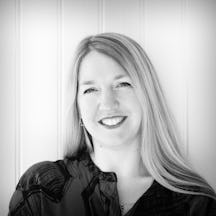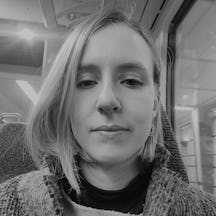Many workplaces have seen significant changes due to COVID-19. Photographer Carmel King documents how one factory went from making hospitality clothing to producing PPE and uniforms for NHS workers.
Tibard have been making uniform in Dukinfield, an industrial area six miles east of Manchester, since 1991. The 20,000 square feet of factory is fitted with daylight bulbs, providing strong, clean light for the women who operate the sewing machines. If you climb up the raised gangway, you can see a wide view of the machinists sitting at workstations dotted across the factory floor like little islands surrounded by pools of green, blue and white fabric.
The two-metre distance between each machinist and the tension in the air are clues that this is not an ordinary day at Tibard. Instead of making the chef’s whites they are used to, they are working on an entirely new product: hospital scrubs.
On Monday 16 March, Boris Johnson told the nation to avoid all “non-essential” travel, but he didn’t tell restaurants, bars and pubs to close until the Friday of that week. At Tibard, orders “fell off a cliff overnight” as hospitality businesses went into limbo – remaining open but with no customers.
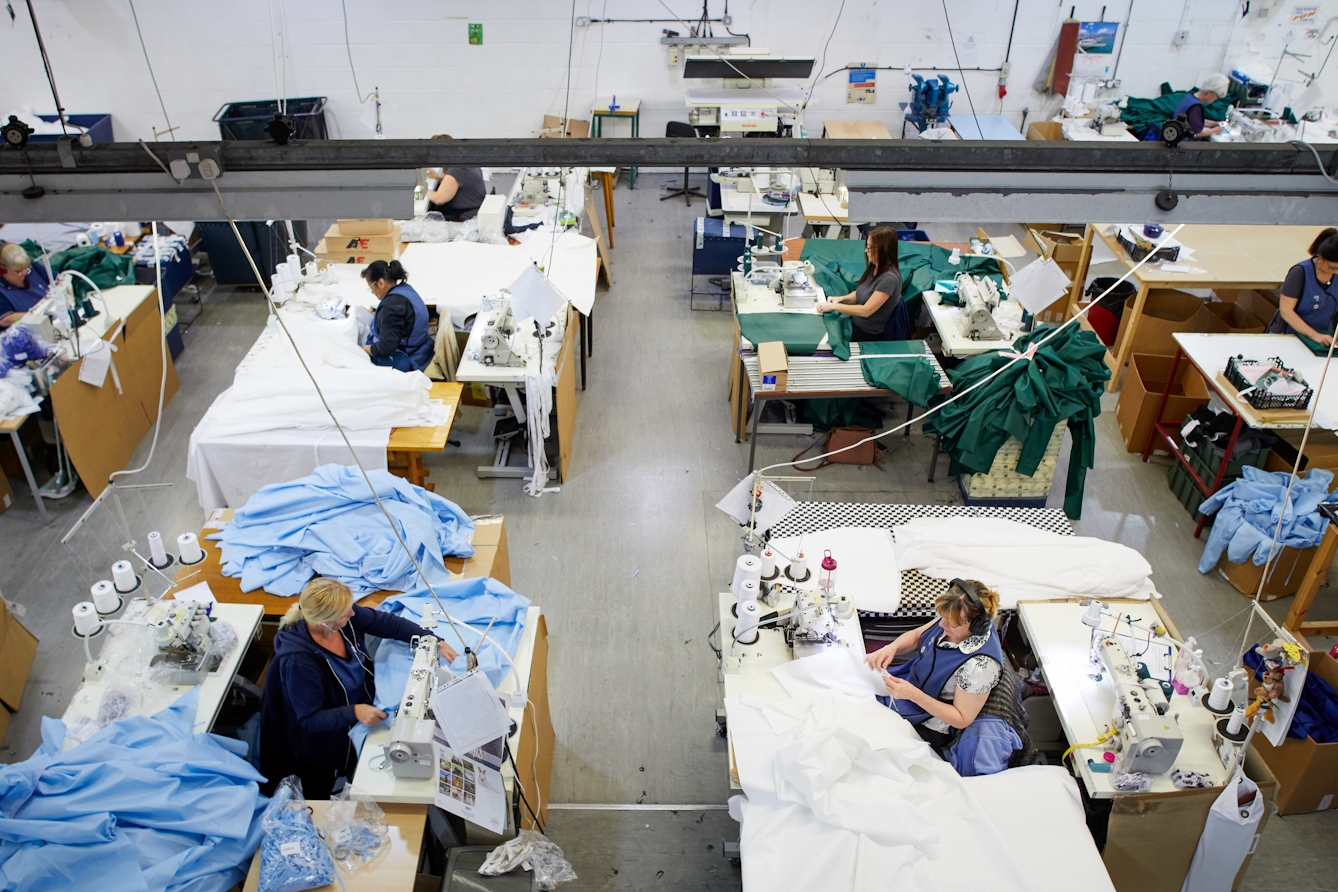
Workstations have been adapted to ensure the machinists can continue to work while safely keeping two metres apart.
One restaurant chain had been developing a new range of uniform and Tibard had just got 1,500 pieces of clothing ready for trial. But everything came to a screeching halt. The uniform was packed away as the waiters and kitchen staff who would have worn them stayed at home.
Meanwhile, NHS trusts up and down the country were suddenly in desperate need of more personal protective equipment (PPE), scrubs and gowns. Increased global demand exhausted the normal supply routes and procurement became chaotic. Connected by one of their main fabric suppliers who were part of an NHS supply chain, Tibard stepped into the fray. In a few days they had arranged a contract that would usually have taken months.

New fabrics and medical scrubs piled up next to chef's whites tell the story of this factory's sudden change in product lines. A direct response to the effects of lockdown on the hospitality industry and acute shortages of PPE within the NHS.
Adapting at speed
When this new order for 12,000 scrubs came in, the main challenge for the machinists was getting used to the new fabric. The polyurethane-coated polyester fabric used to make them was very different from the cotton the machinists were used to sewing for chef’s whites. But the team learned fast and worked together to get production going again as quickly as possible.
They had the skills already, but it took time to return to normal levels of efficiency, at which point they were moved on to another product: after the scrubs came 2,300 medical gowns. A process of creating patterns, making samples and testing them internally, which ordinarily takes months, happened in a matter of days.
Shifting patterns
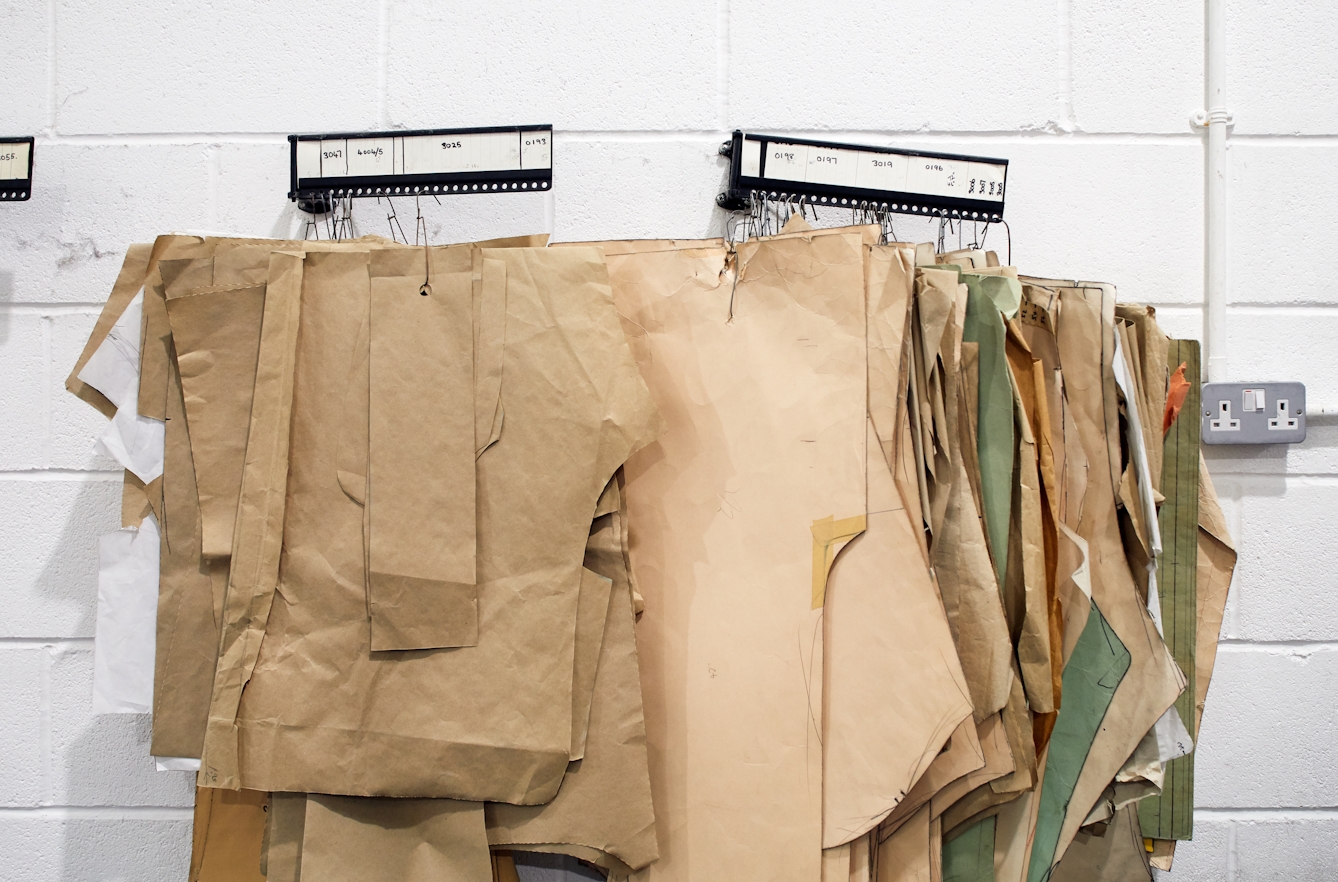
Paper patterns, used to create samples, adorn the cutting-room walls. Tibard deconstructed existing scrubs and medical gowns to understand how they were made, a process of trial and error, until they were satisfied with the product and ready to manufacture their own versions.
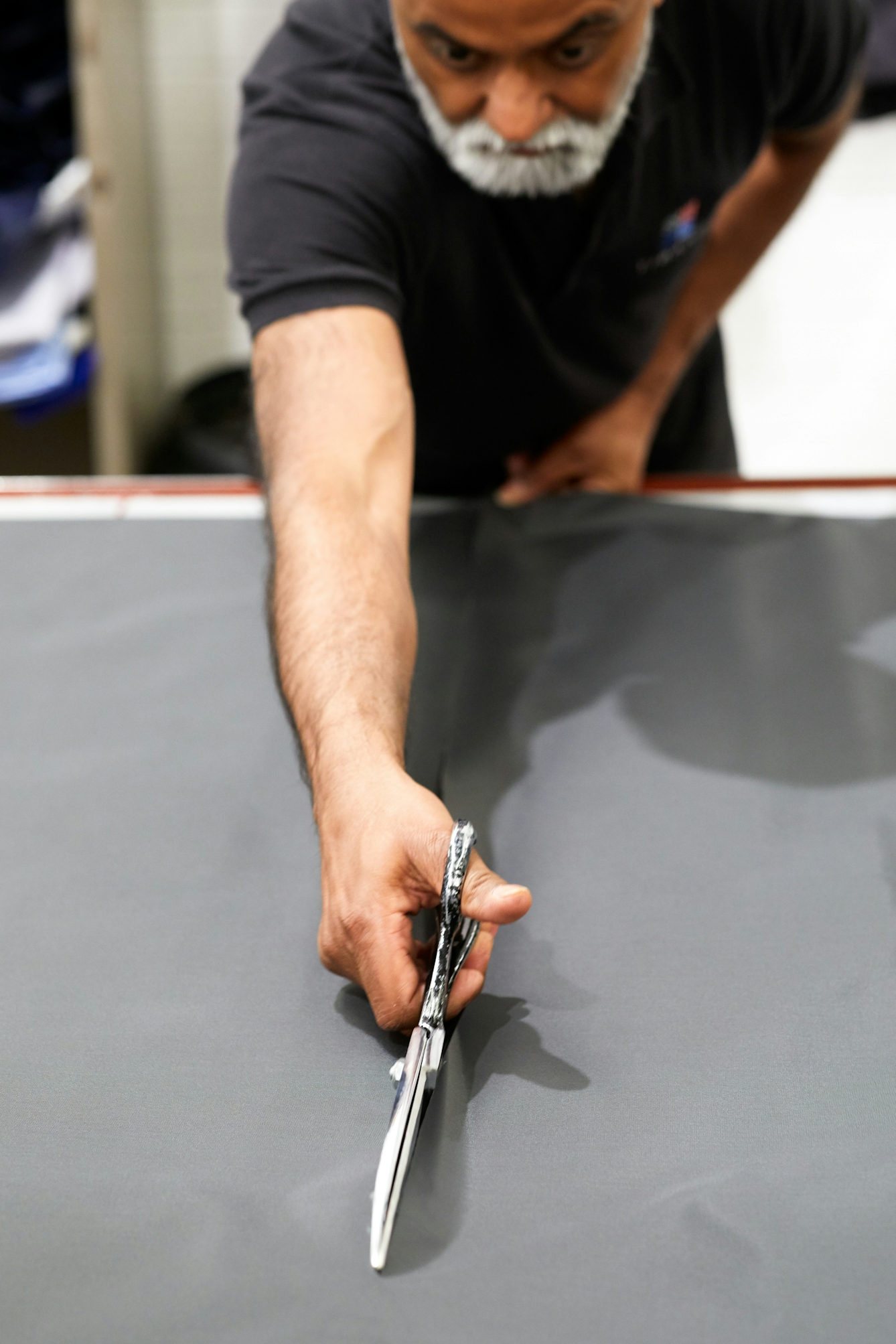
The pattern and cutting room is where all the components for the garments are created. Fabric is cut by hand from huge rolls and then individual pieces are cut by laser. Tibard uses over 90 per cent of every fabric that comes through their factory.
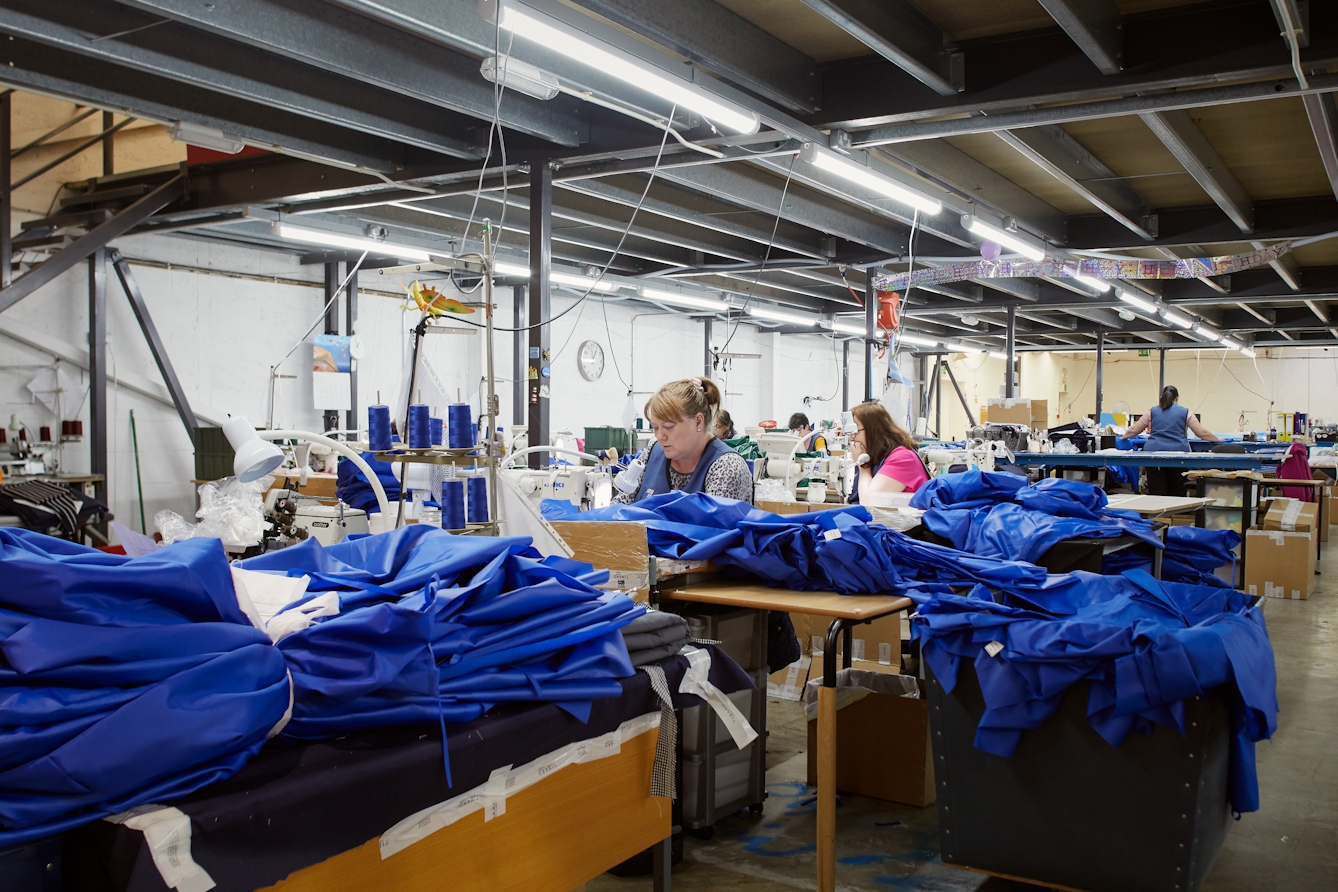
The polyurethane-coated polyester fabric is very different from the cotton the machinists are used to working with. However the team, some of whom have been at Tibard for 25 years, worked together to get production up and running as quickly as possible.
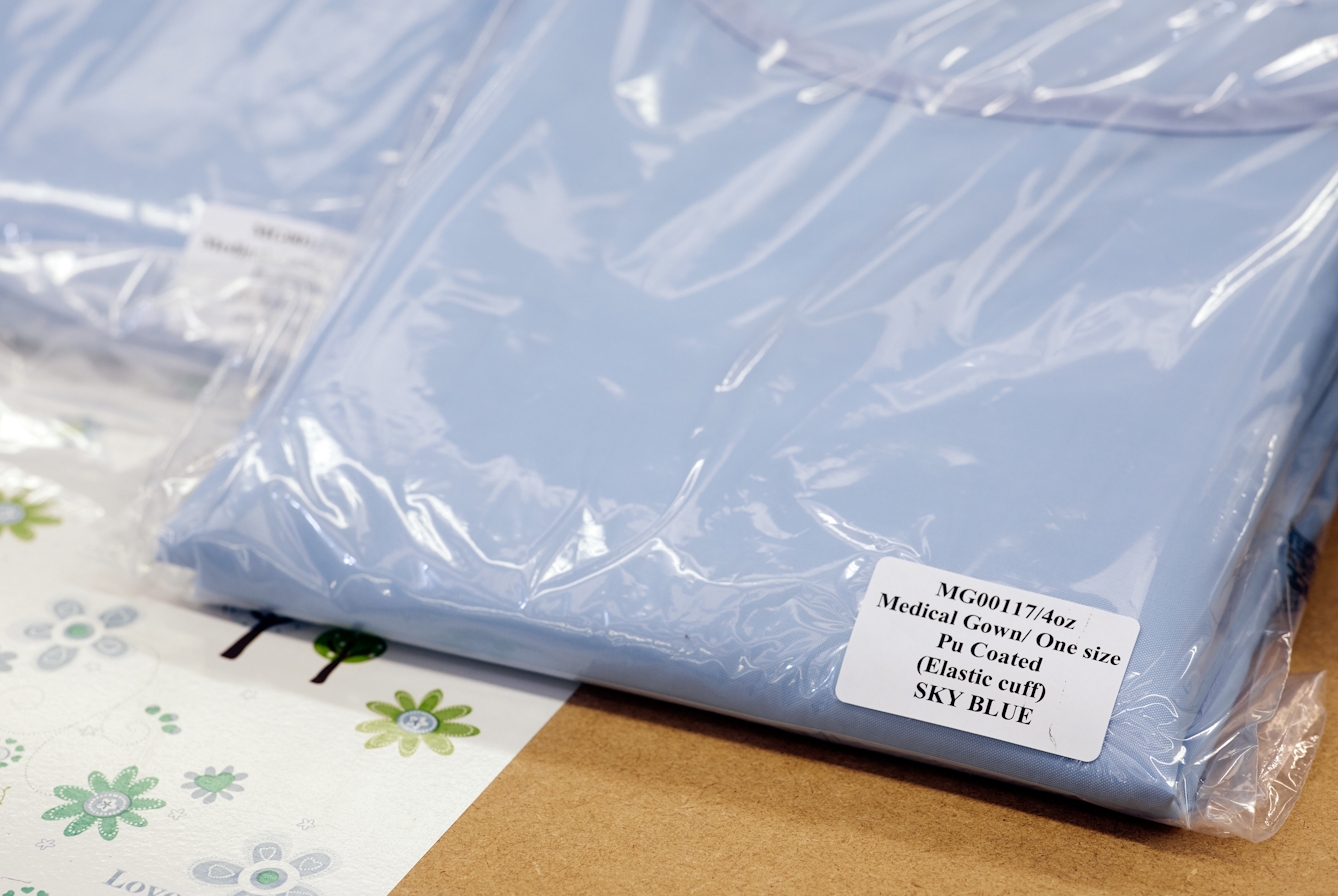
The final garments are packaged up and sent out to local NHS trusts. To date Tibard has sent out over 40,000 sets of PPE.
Diane and Anne-Marie have both worked as machinists at Tibard for over 20 years. Anne-Marie found the complex emotions of working during lockdown the hardest part to deal with at first. She explained that at work she’d be focused on doing her job and getting the orders out, but “you’ve still got another life” and going home “is another set of emotions”. One of her sons is 26 and working from home; another is at university and can’t return home due to the lockdown restrictions; and she has an 11-year-old too.
Diane has also experienced that feeling of a double life, but, “We’re so lucky,” she says. “There’s so many people I know who are out of work.” As some of the most experienced workers at the factory, Diane and Anne-Marie feel their contribution and work ethic are valued.
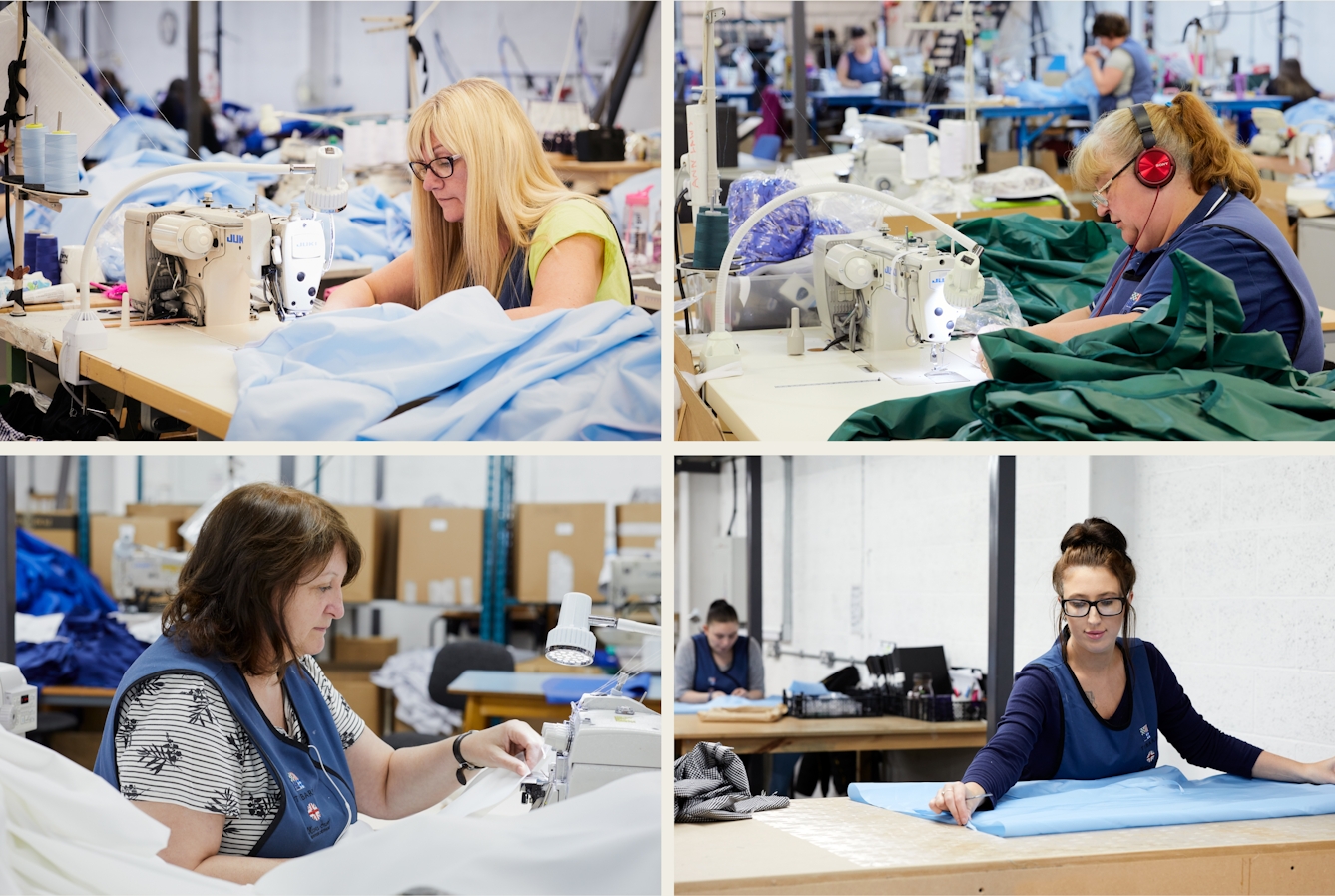
In a process that can ordinarily take months, the team of 32 machinists and 66 production staff worked hard to create and test the new medical garments in just a matter of days.
They’ve been keeping each other’s spirits up, even spread apart at a greater distance. Among the clinical gowns and bright lights, the personalities of the workers shine through. A colourful collection of magnet souvenirs representing the various places they’ve holidayed to over the years scrambles up one side of a metal trolley. There won’t be a new batch joining them this summer.
Surgical gowns and shrouds
Andy Shackleton and Ian Mitchell, at the helm of Tibard, have had to respond swiftly to a potentially disastrous time for the company. It was stressful but they’ve managed to spot opportunities to continue working. Ian says, “There are a lot of companies profiting out of the position the country’s in, the world’s in; all we’re doing is keeping the furnace of production alive, as well as covering overheads.”

Souvenir holiday magnets brought back by members of staff reflect a different time, when the need to make essential medical garments for frontline NHS staff couldn't have been further from their minds.
They’re also responding to drastic changes in supply and demand during unprecedented times for industry and the NHS.
Along with the larger gown order came a smaller order for dark fabric to create shrouds to cover bodies. Receiving that order “made it a bit more real” and took Andy and Ian out of their busy Tibard bubble for a moment of reflection. Then they returned to their focus on the production line, creating the PPE, the scrubs and the gowns to help the NHS keep going.
About the contributors
Carmel King
Carmel King photographs makers and manufacturers across the UK, documenting British craft and industry. She is particularly interested in capturing regions of the country that are known for specific crafts and long-running family firms, where skills and knowledge are passed down through generations. In October 2022 Merrell published ‘Made in London‘, which Carmel King co-authored with Mark Brearley, which looks behind the scenes of 50 workshops and factories across the capital.
Kate Wilkinson
Kate works at Pushkin Press. When not submerged in a book, she can be found walking or practising Spanish. Sometimes both at once.

